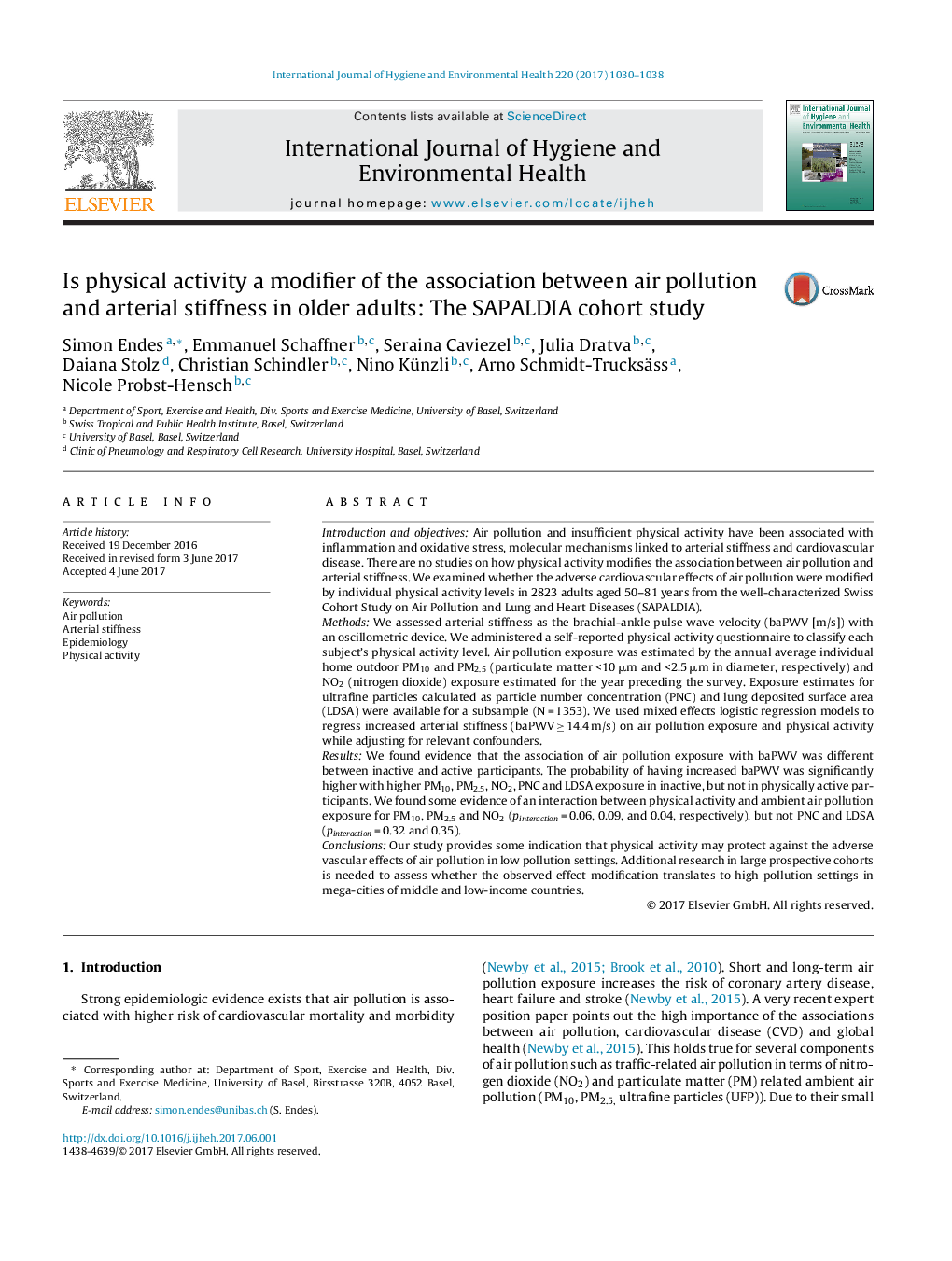| کد مقاله | کد نشریه | سال انتشار | مقاله انگلیسی | نسخه تمام متن |
|---|---|---|---|---|
| 5560480 | 1561871 | 2017 | 9 صفحه PDF | دانلود رایگان |

- A modification of the association between air pollution and arterial stiffness by physical activity (PA) is suggested.
- PA may protect against the long-term adverse vascular effects of particulate matter in low pollution settings.
- Additional research in large prospective cohorts is needed to allow for investigating the time sequence between pollution and PA.
- The role of PA in changing sensitivity to inhaled particles should be further studied in high pollution settings.
Introduction and objectivesAir pollution and insufficient physical activity have been associated with inflammation and oxidative stress, molecular mechanisms linked to arterial stiffness and cardiovascular disease. There are no studies on how physical activity modifies the association between air pollution and arterial stiffness. We examined whether the adverse cardiovascular effects of air pollution were modified by individual physical activity levels in 2823 adults aged 50-81 years from the well-characterized Swiss Cohort Study on Air Pollution and Lung and Heart Diseases (SAPALDIA).MethodsWe assessed arterial stiffness as the brachial-ankle pulse wave velocity (baPWV [m/s]) with an oscillometric device. We administered a self-reported physical activity questionnaire to classify each subject's physical activity level. Air pollution exposure was estimated by the annual average individual home outdoor PM10 and PM2.5 (particulate matter <10 μm and <2.5 μm in diameter, respectively) and NO2 (nitrogen dioxide) exposure estimated for the year preceding the survey. Exposure estimates for ultrafine particles calculated as particle number concentration (PNC) and lung deposited surface area (LDSA) were available for a subsample (N = 1353). We used mixed effects logistic regression models to regress increased arterial stiffness (baPWV â¥Â 14.4 m/s) on air pollution exposure and physical activity while adjusting for relevant confounders.ResultsWe found evidence that the association of air pollution exposure with baPWV was different between inactive and active participants. The probability of having increased baPWV was significantly higher with higher PM10, PM2.5, NO2, PNC and LDSA exposure in inactive, but not in physically active participants. We found some evidence of an interaction between physical activity and ambient air pollution exposure for PM10, PM2.5 and NO2 (pinteraction = 0.06, 0.09, and 0.04, respectively), but not PNC and LDSA (pinteraction = 0.32 and 0.35).ConclusionsOur study provides some indication that physical activity may protect against the adverse vascular effects of air pollution in low pollution settings. Additional research in large prospective cohorts is needed to assess whether the observed effect modification translates to high pollution settings in mega-cities of middle and low-income countries.
Association between the probability of increased brachial-ankle pulse wave velocity (baPWV) and particulate matter (PM10, PM2.5, per interquartile range (IQR)) among physically active and inactive subjects. All models are adjusted by age, sex, education, socioeconomic position, packyears of smoking, body mass index, heart rate and mean arterial pressure. The scale of the x-axis extends from the lower to the upper quartile of the respective pollutant.87
Journal: International Journal of Hygiene and Environmental Health - Volume 220, Issue 6, August 2017, Pages 1030-1038